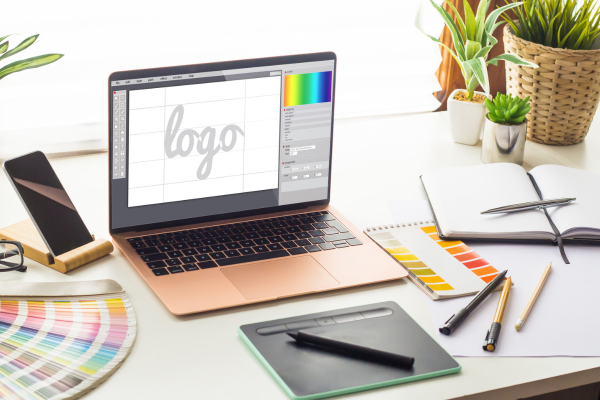Design is a powerful force that has shaped the world we live in. From ancient civilizations to the modern digital era, design has evolved and adapted, driven by the needs and aspirations of society. It is a journey of innovation, creativity, and constant reinvention. In this article, we embark on a captivating exploration of design through the ages, tracing its evolution and the significant milestones that have shaped its path. From architectural marvels to technological breakthroughs, join us on this journey of design’s evolution and the profound impact it has had on our lives.
Design is more than just aesthetics; it encompasses the thoughtful creation of solutions that address complex problems and improve the quality of life. Since the dawn of civilization, humans have employed design principles to create functional and visually pleasing objects. From the monumental pyramids of Egypt to the intricate carvings of ancient temples, design played a pivotal role in shaping the physical environment and expressing the cultural values of societies.
The Renaissance period marked a significant turning point in the history of design. It was a time of renewed curiosity and exploration, where thinkers, artists, and inventors sought to revive the knowledge and artistic achievements of ancient civilizations. The works of Leonardo da Vinci, Michelangelo, and other visionaries epitomized the fusion of art, science, and design. The Renaissance unleashed a wave of creativity and innovation that reshaped architecture, art, and craftsmanship.
The Industrial Revolution brought about a paradigm shift in design. With the advent of new technologies and mass production capabilities, design became intertwined with the emerging consumer culture. Industrial design emerged as a discipline that focused on creating products that were not only functional but also aesthetically appealing and affordable for the masses. The revolution in manufacturing processes transformed the way goods were produced and consumed, revolutionizing design practice.
As the world progressed into the modern era, the design continued to evolve in response to societal, technological, and cultural changes. The modernist movement, characterized by simplicity, functionality, and clean lines, sought to address the challenges of the industrialized world. Modernist designers embraced new materials, innovative construction techniques, and an emphasis on efficiency. This approach revolutionized architecture, product design, and graphic design, leaving a lasting impact on the way we perceive and interact with our surroundings.
The digital age has ushered in a new frontier for design. The rapid advancements in technology have enabled designers to create immersive virtual experiences, interactive interfaces, and user-centric solutions. The digital realm has expanded the possibilities of design, opening up new avenues for creativity and transforming the way we communicate, work, and live.
As we reflect on the journey of design, we recognize the profound influence it has had on society and our daily lives. Design is a constant force of innovation and problem-solving, pushing boundaries and challenging conventions. It has the power to inspire, connect, and improve the human experience. Join us as we delve into the intricacies of design’s evolution, celebrating the creativity and ingenuity of designers throughout history.
I. The Birth of Design: Ancient Wonders and Artistry
Design finds its origins in the ancient civilizations that left behind remarkable architectural wonders and artistic expressions. The pyramids of Egypt, the grandeur of the Parthenon, and the intricacies of the Taj Mahal are testaments to the mastery of design achieved in ancient times. These architectural marvels not only served functional purposes but also reflected the cultural, religious, and societal values of their respective civilizations. In parallel, artisans and craftsmen showcased their artistic skills through pottery, metalwork, and textiles, infusing beauty and symbolism into everyday objects.
II. Renaissance: The Rebirth of Art and Design
The Renaissance period marked a transformative era for design, characterized by a renewed interest in classical art and humanistic ideals. Artists and thinkers such as Leonardo da Vinci, Michelangelo, and Raphael pushed the boundaries of creativity, blending art and science. They embraced perspective, proportion, and anatomical accuracy, revolutionizing the fields of painting, sculpture, and architecture. The Renaissance witnessed the emergence of iconic masterpieces that continue to inspire and captivate us to this day.
III. Industrial Revolution: Design Meets Mass Production
The Industrial Revolution brought about a seismic shift in design as society transitioned from agrarian to industrialized economies. Innovations in machinery, manufacturing, and transportation revolutionized production capabilities. Designers were faced with the challenge of creating functional, aesthetically pleasing, and affordable products on a mass scale. This era witnessed the birth of industrial design, where form and function converged to cater to the demands of an emerging consumer culture.
IV. Modernism: Embracing Functionality and Simplicity
Modernism emerged as a response to the complexities of the industrialized world. Designers sought to create streamlined, functional, and minimalist designs that embraced the principles of form follows function. Influential figures such as Le Corbusier, Ludwig Mies van der Rohe, and Frank Lloyd Wright revolutionized architecture and design, emphasizing simplicity, clean lines, and the integration of design with the natural environment. Modernist principles continue to shape our understanding of design aesthetics and functionality.
V. Postmodernism: Embracing Pluralism and Contextual Expression
Postmodernism challenged the rigidity of modernism and embraced diversity, complexity, and the breaking of traditional design conventions. Designers drew inspiration from various sources, blending different styles, cultural references, and historical motifs. This approach brought a sense of playfulness, irony, and individual expression into design. Postmodernism expanded the possibilities of design, celebrating diversity and challenging the notion of a singular design language.
VI. Digital Age: Design in the Technological Era
The advent of the digital age revolutionized the design landscape, transforming the way we create, communicate, and experience design. Computers, software, and digital tools opened up new frontiers for designers, enabling complex simulations, precise 3D modeling, and interactive experiences. Designers embraced digital technologies to create captivating visuals, intuitive user interfaces, and immersive virtual environments. The digital age also brought about the democratization of design, allowing individuals to participate in the creative process like never before.
VII. Sustainability and Human-Centered Design: Shaping a Better Future
In recent years, design has embraced sustainability and human-centered approaches to address pressing global challenges. Designers are increasingly incorporating sustainable practices, using eco-friendly materials, and creating designs that promote social equity and environmental responsibility. Human-centered design places the user at the center of the design process, ensuring that solutions are empathetic, inclusive, and cater to the needs of diverse individuals and communities. Design has the power to shape a better future by addressing social, economic, and environmental issues and creating positive impact on a global scale.
Conclusion
Design has traversed a remarkable journey throughout history, constantly evolving and adapting to the changing needs and aspirations of society. From ancient wonders to modern technological innovations, design has transformed the way we interact with the world. It has shaped our environments, influenced our behaviors, and enhanced our experiences. As we reflect on the evolution of design, we recognize the enduring power of creativity, innovation, and human ingenuity. Design will continue to evolve, driven by new technologies, emerging trends, and the quest for a more sustainable and inclusive future.



